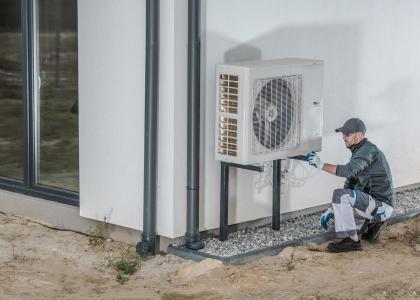What’s an innovative way to save energy? In recent years, as ACEEE has found, utilities have developed all sorts of games and competitions that motivate homeowners and other people to reduce their energy use. An upcoming analysis highlights how manufacturers are also using gamification as one way to crowdsource energy savings.
This paper will be one of more than four dozen presented at the 14th biennial Summer Study on Energy Efficiency in Industry next month. This weeklong virtual event will explore the latest technologies, policies, and programs for reducing energy waste and decarbonizing industry, which accounts for more than one-fourth of U.S. greenhouse gas emissions.
“The ACEEE Summer Study is itself an example of crowdsourcing energy efficiency solutions,” says Clifton Yin, a senior energy and sustainability analyst at consulting firm ICF and co-author of the new gamification paper with ICF colleagues Mitch Brown and Jesse Gubert. Yin adds, “We’re looking forward to learning, networking, and sharing ideas.”
To see how gamification (turning a real-world activity into a game) and crowdsourcing could be used across the industrial sector, the authors studied the approaches of four manufacturers participating in the U.S. Department of Energy’s (DOE) Better Plants program: ArcelorMittal USA (acquired by Cleveland Cliffs last year), Celanese Corporation, Legrand North America, and Saint-Gobain Corporation. At one of our Summer Study plenaries, Cleveland Cliffs’ CEO Lourenco Goncalves will discuss the company’s approach to decarbonization.
To learn more about the paper’s findings, I asked Yin a few questions. Here’s a sneak peek with excerpts of our conversation:
Why are manufacturers using gamification and crowdsourcing to save energy?
Crowdsourcing and gamification increase employee engagement and empower employees to implement technology and process changes while reshaping their own energy usage behaviors. They also provide companies with creative and fun options to increase energy efficiency at the facility level beyond just traditional capital projects. There’s science behind it; games have been proven to promote teamwork and problem solving, while crowdsourcing is effective at gathering new ideas and fostering a more inclusive culture that improves morale and helps achieve energy saving goals.
Can you give us some examples of how manufacturers are doing this?
ArcelorMittal hosted a Power of 1 contest to encourage employees to develop energy cost savings ideas, while Celanese crowdsourced “Did You Know”-type energy efficiency fact sheets through an initiative called “Energy Sparks.” “Energy Marathons,” a competition among five-person employee teams across the company to improve compressed air efficiency. Compress It,” a competition between five-person employee teams across the company to improve compressed air efficiency.
How much energy did one of these companies save?
Legrand has saved over 1.8 million kilowatt-hours (kWh) and $185,000 in energy costs over the course of three Energy Marathons. Another goal of the Energy Marathon is to encourage sites and employees to share and adopt long-term energy-saving habits that will last well beyond the 26.2 days of the competition. To find new opportunities, Legrand paired new and old sites as a team and tied the progress for both buildings together.
How can other companies optimize these approaches?
There’s a wealth of crowdsourcing and gamification examples in both the public and private sectors, but not a whole lot of set guidelines and best practices. Our paper aims to help companies structure these types of initiatives by applying John P. Kotter’s 8-step change model, a popular framework for successfully implementing organizational change. The steps Kotter identified to successfully implement organizational change are: 1. Establishing a sense of urgency; 2. Creating the guiding coalition; 3. Developing a vision and strategy; 4. Communicating the change vision; 5. Empowering employees for broad-based action; 6. Generating short-term wins; 7. Consolidating gains and producing more change; and 8. Anchoring new approaches in the culture.
By 2030, how widely do you expect companies will use gamification and crowdsourcing to save energy?
The approaches have become more mainstream as manufacturers broaden the scope of their energy management initiatives and build more energy-focused company cultures. In addition to the Better Plants case studies from ArcelorMittal, Celanese, Legrand, and Saint-Gobain, our paper cites examples from IBM and Xerox, and there are additional examples from 3M, Armstrong Flooring, and more. We expect an increasing number of companies will be taking advantage of these strategies to engage employees and improve energy efficiency by 2030.



